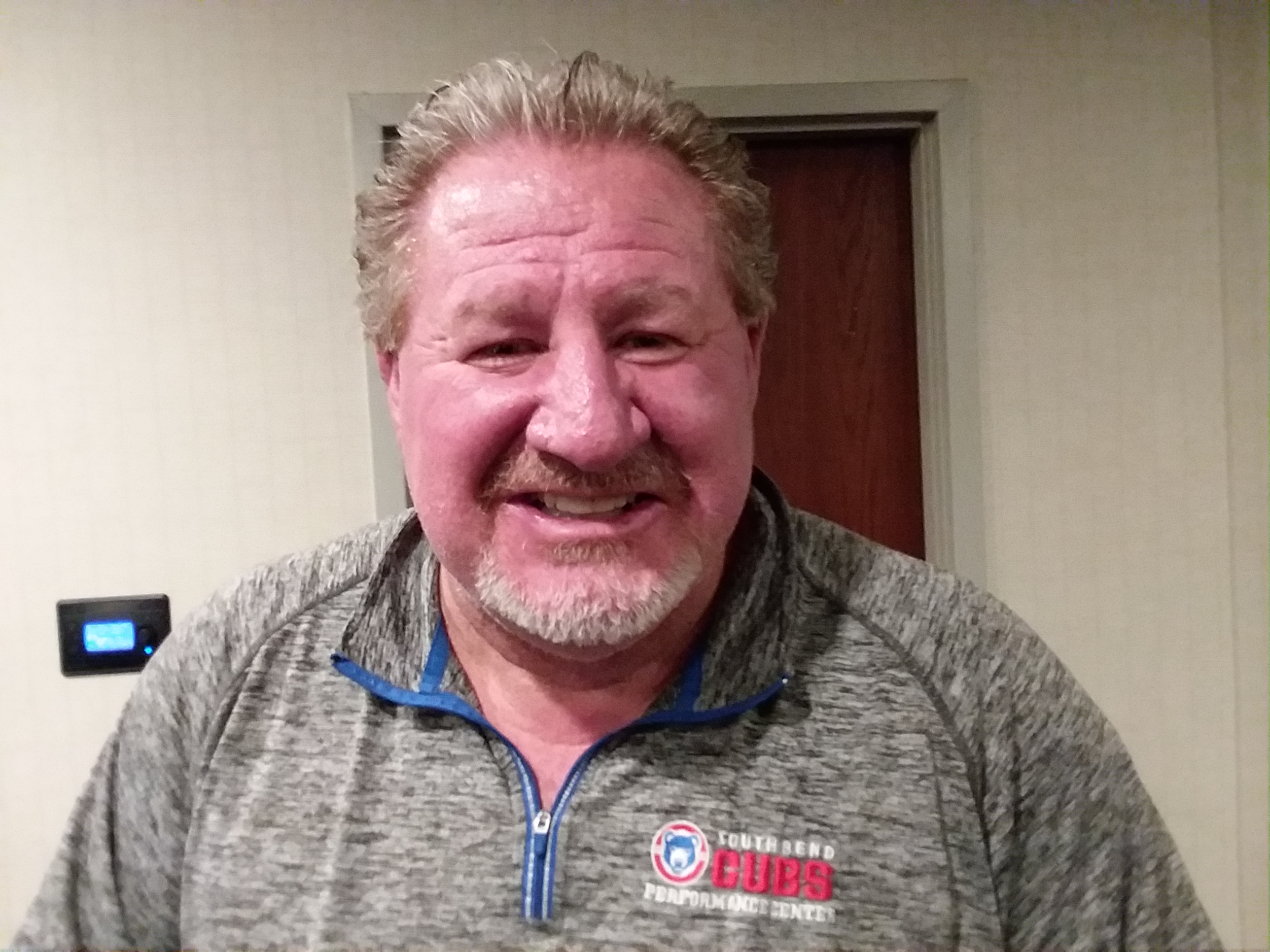
By STEVE KRAH
http://www.IndianaRBI.com
Joe Rotkis got just eight outs in his first season as a college baseball pitcher.
Taking the mound for Morehead (Ky.) State University in 2020, the right-hander from South Bend (Ind.) Saint Joseph High School hurled 2 1/3 innings.
“It was the worst 2 1/3 innings I pitched in my entire life,” says Rotkis, who gave up 16 earned runs and 14 hits as an MSU freshman. “It was frustrating in the moment. I knew what I was capable of and I didn’t show it.”
That became the driving force for Rotkis through the rest of the COVID-19 spring and summer and into the 2021 season.
After the 2020 shutdown, Rotkis played for the Midwest Collegiate League’s Whiting-based Northwest Indiana Oilmen.
“That was awesome,” says Rotkis, who pitched well enough in his first two relief stints that he landed a spot in the Oilmen’s starting rotation.”
He also got to work with pitching coach Matt Pobereyko. He took to approach espoused by the former pro moundsman.
“He said I was just over-thinking things and to go out and do what I know I can do,” says Rotkis, 20. “I gained confidence last summer.
“Confidence is the best tool.”
Playing this spring at Morehead State, where Mik Aoki is the head coach and Brady Ward the pitching coach, Rotkis made 13 appearances (all out of the bullpen) and was 2-0 with a 4.05 earned run average. In 26 2/3 innings, he struck out 21 and walked 10.
Rotkis uses four pitches — a two-seam sinking fastball, a four-seam fastball, a “circle” change-up and a slider.
“It plays off the sinker and the same tunnel, working different sides of the plate,” says Rotkis, who throws from a mid-three-quarter overhand arm slot which helps with his sinker and touched 92 mph a few times in the spring while sitting in the high 80s. “I like to throw anything to anybody.
“I just throw what I think’s going to beat them at that point.”
The 6-foot-2, 210-pound Rotkis went for an assessment at the P3 (Premier Pitching Performance) lab in St. Louis and is working this summer with Director of Remote Pitching Mitch Plassmeyer while following a structuring throwing and weightlifting plan near home in Granger, Ind.
“He knows what he’s talking about,” says Rotkis of Plassmeyer. “He filled my head with knowledge.”
In the third week of the program, Rotkis lifts four times a week — two upper body and two lower body. He does mobility moves before lifting and throwing.
Working out with former high school teammate Patrick Farrissee (now on the Clemson University club baseball team) on the practice football fields at Notre Dame, Rotkis long tosses 100 yards or more.
As a sophomore, Farrissee was the starting left fielder when Saint Joseph won the 2017 IHSAA Class 3A state championship.
Rotkis is a 2019 graduate of Saint Joseph, where he and buddies Farrissee, Mitchell Coleman, Nick Dolniak, Surf Sadowey, Michael Schroeder and Brady Gumpf (now at Notre Dame) played for former Indians head coach John Gumpf and former assistant and current bench boss John Smolinski.
“They made practice enjoyable to come to each day,” says Rotkis, who began to get some NCAA Division I offers through the Area Code Games trials at Grand Park in Westfield, Ind.
He was recruited by Morehead State when Mike McGuire was head coach and Kane Sweeney the pitching coach and then they both left for the University of South Carolina Upstate.
Aoki and Ward convinced Rotkis to still come play for the Eagles.
Born in Elkhart, Ind., Rotkis moved from Bristol, Ind., to Granger around age 5 with parents Mike and Jill and younger brother Andrew (a 2021 St. Joseph graduate bound for Purdue University).
Joe played at what is now Harris Baseball Softball and then Chet Waggoner Little League in South Bend which led to the Michiana Baseball Club travel team. As a high school, he was with the South Bend Cubs travel organization, spending two summers with South Bend Silver Hawks manager Mark Haley as coach.
“Mark Haley is one of the smartest and one of the most caring baseball guys I’ve ever had the pleasure of talking to,” says Rotkis. “He’s awesome.
“We were learning the game, the ins and out and the little things.”




